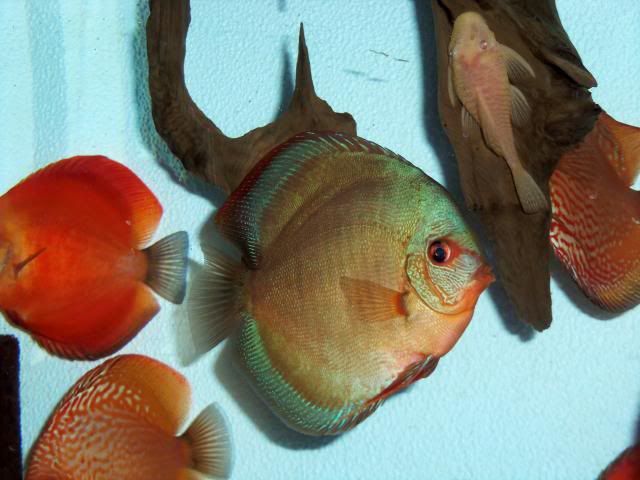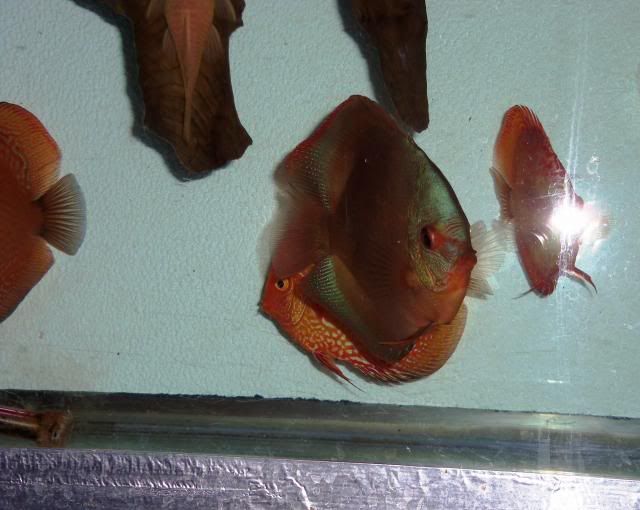Ok then what is a mercury? I have a mercury that I believe is heterozygous for the BD gene, it's the only way to explain the offspring I see in my contest batch three. I have witnessed hat the BD gene and the PB gene do interact together sometimes with suprising results, it has me making some guess's as to there relative proximimity.
.
True, but it's distrubution is usually somewhat different. Rod, take a look at the many crossing of the VR/RC type to a blue diamond. You will see the blue coloring in the prodigy. I have yet to see an expample of such distrubution of the blue coloring over the brown body produced by anyother fish other than a Blue Diamond. It leads me to beleive that it is in fact the BD gene expressing itself in heterozygous form. If not, how do you explain it?
This is not quite what I was looking for but an example none-the-less:

If not a bd gene in heterozygous form, how do you explain the coloration on some of these fish?
Rick
) quite frequently. I suggest you take a look at my contest threads as well as my homesteader section.





 Reply With Quote
Reply With Quote









